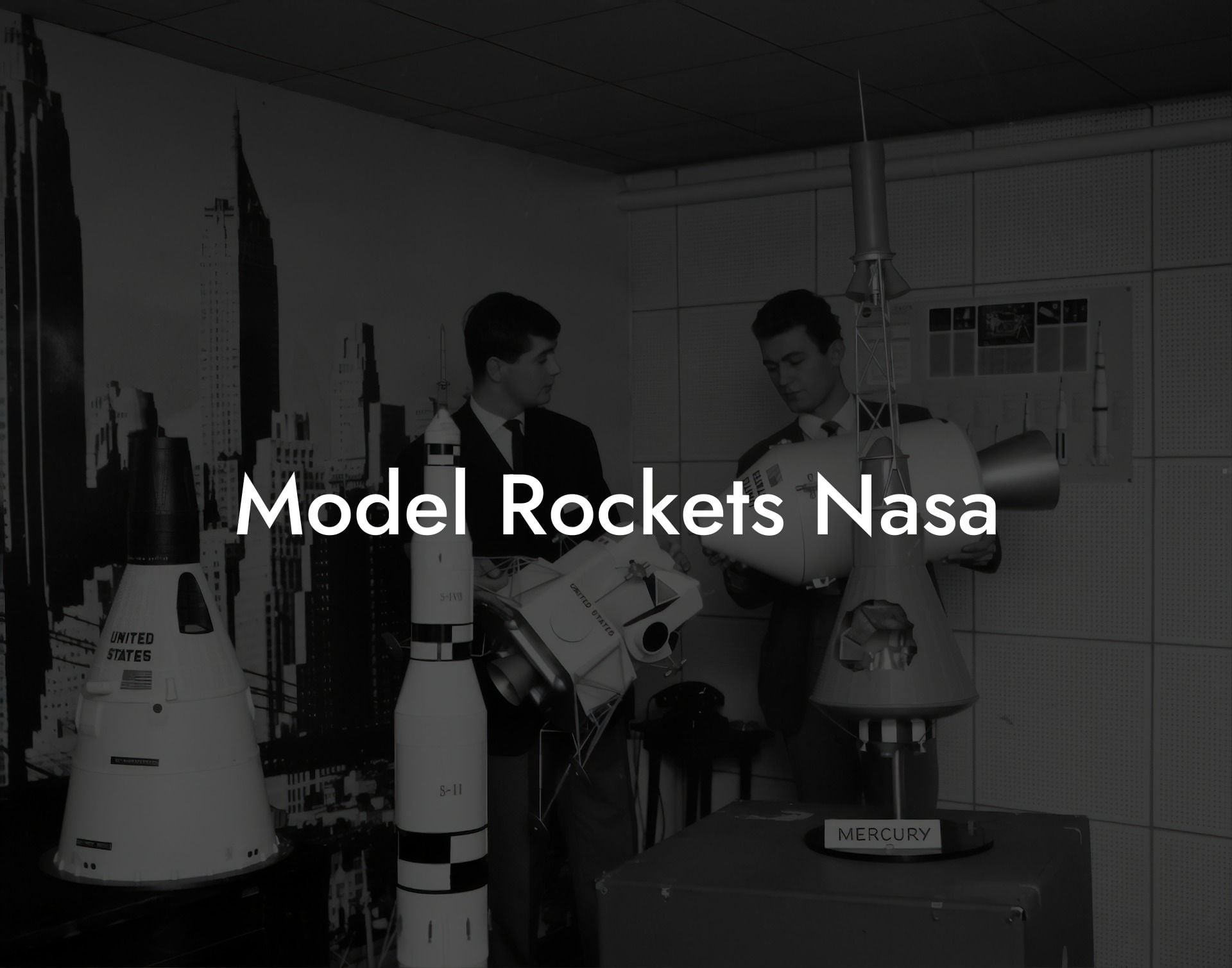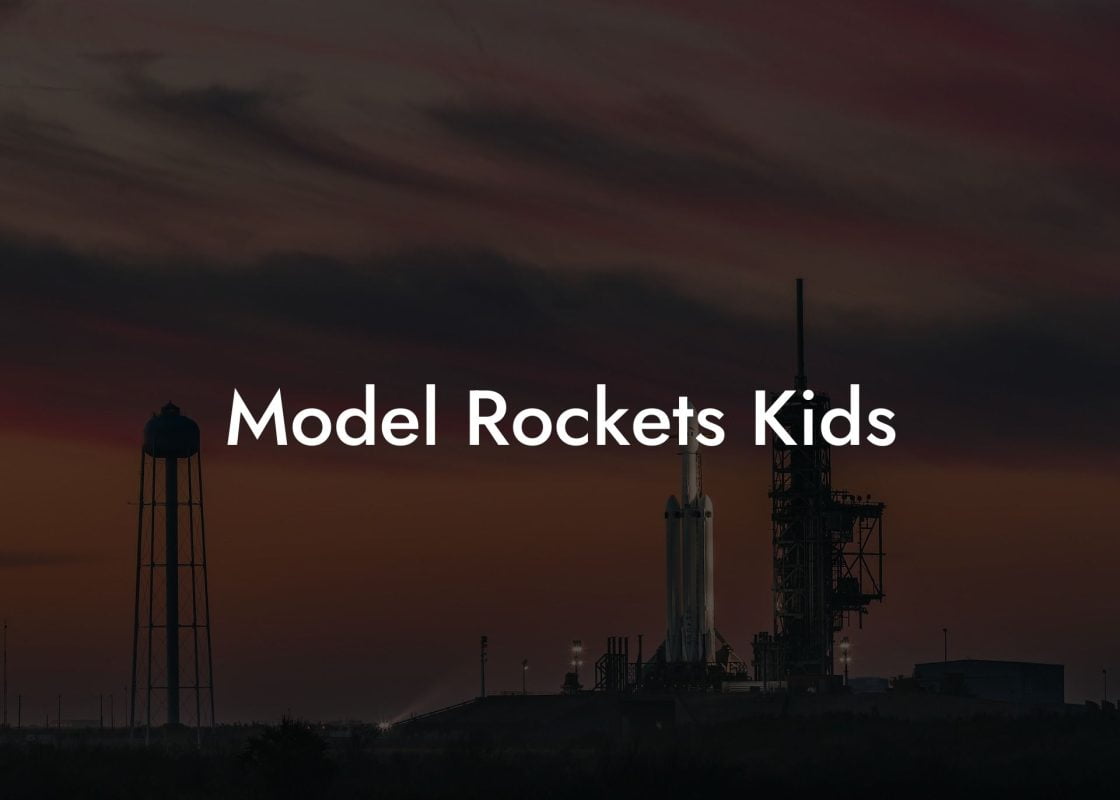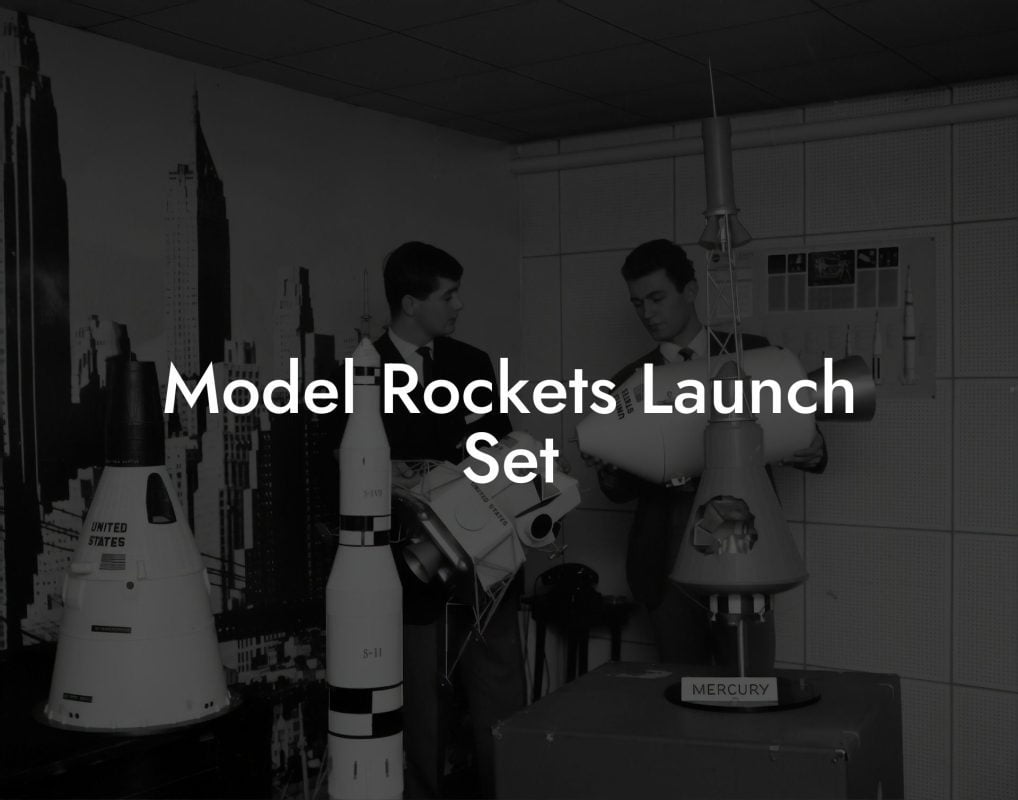Imagine soaring to new heights with the thrill of model rocketry, inspired by the pioneering spirit of NASA. Welcome to the world of model rockets, where creativity, science, and adventure come together in a blast of fun and learning. Whether you're a seasoned enthusiast or just starting out, this comprehensive guide will propel you into the exciting realm of model rockets, exploring the latest trends, techniques, and NASA-inspired innovations.
Quick Links to Useful Sections
What Are Model Rockets?
Model rockets are scaled-down versions of real rockets, designed to mimic the look, feel, and flight characteristics of their full-sized counterparts. Ranging from simple, DIY kits to complex, high-performance models, these miniature marvels offer a unique blend of STEM education, creativity, and outdoor adventure.
With model rockets, you can experiment with different designs, materials, and propulsion systems, gaining hands-on experience with aerodynamics, thrust, and gravity. Whether you're a student, hobbyist, or simply a space enthusiast, model rockets provide an engaging way to explore the wonders of space exploration and NASA's achievements.
The History of Model Rockets
The concept of model rockets dates back to the early 20th century, with pioneers like Robert Goddard and Hermann Oberth experimenting with liquid-fueled rockets. However, it wasn't until the 1950s and 1960s that model rocketry became a popular hobby, thanks in part to NASA's early achievements in space exploration.
Today, model rockets have evolved to incorporate advanced materials, electronics, and computer-aided design. The rise of 3D printing, for example, has enabled the creation of complex, customized models that were previously impossible to produce.
Looking For The Best Model Rocket Kits? You'll Love These:
NASA's Influence on Model Rocketry
NASA's innovations and achievements have had a profound impact on the world of model rocketry. From the Mercury and Gemini programs to the Space Shuttle and modern Mars rovers, NASA's pioneering spirit has inspired generations of model rocket enthusiasts.
Many model rocket designs are directly inspired by NASA's spacecraft and launch vehicles, with enthusiasts often reproducing scale models of iconic vehicles like the Saturn V and Space Shuttle. NASA's advancements in materials science, propulsion systems, and computer simulation have also trickled down to the model rocket community, enabling the creation of more sophisticated and realistic models.
Getting Started with Model Rockets
If you're new to model rockets, getting started is easier than you think. Here are some essential steps to help you launch your model rocketry journey:
- Choose a starter kit: Select a beginner-friendly kit that includes everything you need to get started, including the model rocket, motor, and launch pad.
- Learn about safety: Familiarize yourself with model rocket safety guidelines and best practices to ensure a fun and safe experience.
- Join a community: Connect with local model rocket clubs, online forums, or social media groups to learn from experienced enthusiasts and stay up-to-date with the latest trends and techniques.
As you progress, you can experiment with different materials, designs, and propulsion systems, pushing the boundaries of what's possible with model rockets.
Advanced Model Rocketry Techniques
For experienced enthusiasts, there are many ways to take your model rocketry skills to the next level. Here are some advanced techniques to explore:
- Custom designs: Use computer-aided design (CAD) software and 3D printing to create complex, customized models that showcase your creativity and skills.
- High-power rocketry: Experiment with high-power motors and advanced propulsion systems to achieve greater altitudes and speeds.
- GPS and telemetry: Integrate GPS and telemetry systems into your models to track performance, altitude, and velocity in real-time.
By pushing the boundaries of model rocketry, you can develop new skills, explore innovative ideas, and contribute to the ongoing evolution of this exciting hobby.
Model Rocketry and STEM Education
Model rockets offer a unique platform for STEM education, enabling students to learn by doing and exploring complex concepts in a hands-on, interactive way.
By incorporating model rockets into STEM curricula, educators can teach a range of essential skills, including:
- Aerodynamics and propulsion: Understand the principles of flight, thrust, and gravity through hands-on experimentation.
- Mathematics and physics: Apply mathematical concepts, such as trajectory calculation and velocity measurement, to real-world problems.
- Engineering and design: Develop problem-solving skills, critical thinking, and creativity through the design and construction of model rockets.
By integrating model rockets into STEM education, we can inspire the next generation of innovators, engineers, and space explorers.
Resources and Community Support: Your Next Steps
Whether you're a seasoned enthusiast or just starting out, there are many resources available to help you take your model rocketry skills to the next level. Here are some essential resources to explore:
- Model rocket clubs and organizations: Join local or national clubs to connect with like-minded enthusiasts, learn from experts, and stay updated on the latest trends and techniques.
- Online forums and communities: Participate in online discussions, share your experiences, and learn from others in the model rocket community.
- NASA resources and educational programs: Explore NASA's educational resources, including lesson plans, videos, and interactive tools, to enhance your model rocketry skills and knowledge.
By tapping into these resources and community support, you can accelerate your learning, stay inspired, and contribute to the ongoing evolution of model rocketry.
Frequently Asked Questions: Model Rockets NASA
Here are some frequently asked questions about model rockets and NASA:
1. What is the relationship between model rockets and NASA?
Model rockets are inspired by NASA's achievements in space exploration, and many model rocket designs are directly influenced by NASA's spacecraft and launch vehicles.
2. Can model rockets really help with STEM education?
Yes, model rockets offer a unique platform for STEM education, enabling students to learn by doing and exploring complex concepts in a hands-on, interactive way.
3. What are some safety considerations for model rockets?
Always follow safety guidelines and best practices when launching model rockets, including ensuring a safe distance from people and property, using protective eyewear, and avoiding launching near airports or in bad weather.
4. Can I build my own model rocket from scratch?
Yes, with some creativity, patience, and skills, you can design and build your own model rocket from scratch, using materials like balsa wood, plastic, or 3D printed components.
5. How can I get involved in model rocketry?
Start by choosing a starter kit, learning about safety, and joining a local model rocket club or online community to connect with experienced enthusiasts and stay updated on the latest trends and techniques.
Looking For The Best Model Rocket Kits? You'll Love These:
Useful Interruption: Dive deeper into the world of Model Rockets with our most popular sections. If there is anything you think is missing or anything you would love for us to write about, just give us a shout.
- Getting Started & Basics With Model Rockets
- Model Rocket Design, Build & Customization
- Model Rocket Propulsion & Engine Technology
- Model Rocket Launch Techniques & Recovery
- Model Rocket Advanced Rocketry & Innovations
- Model Rocket DIY and Customization
- Model Rocket Equipment Reviews & Digital Tools
- Community, Competitions & Education
- Model Rocket Troubleshooting & FAQs
- Model Rocket Bonus/Seasonal & Niche Topics
A group of model rocket enthusiasts gathered at a field for their weekly launch event. Among them was Dave, a seasoned builder known for pushing the limits of hobby rocketry. This time, he had outdone himself.
“Ladies and gentlemen,” Dave announced, dramatically pulling a cloth off his latest creation, “I present to you: The Kraken!”
The crowd gasped. This wasn’t just a model rocket, it was a monster. The thing stood 8 feet tall, had six clustered engines, and was covered in enough duct tape to qualify as a classified aerospace project.
“Dave,” muttered Steve, the cautious safety officer, “Have you, uh… done the math on this?”
“Math?” Dave scoffed. “I built it in my garage at 3 a.m. with parts from eBay. This is an art piece, Steve.”
The countdown began.
5…
4…
3…
2…
1…
The engines ignited with a BOOM, and The Kraken shot up… kind of. It immediately did a violent barrel roll, narrowly missing the spectators before skyrocketing at an angle that could only be described as “legally questionable.”
The crowd collectively ducked as The Kraken flew straight over the adjacent cornfield, where Old Man Jenkins, the grumpiest farmer in town, was minding his business.
KABOOM!
The rocket disappeared behind the barn. A moment later, a flaming piece of Estes igniter wire landed at Steve’s feet. The silence was deafening.
And then, an unmistakable sound echoed across the field.
Jenkins’ shotgun being cocked.
“DAVE!!!” Steve shouted. “RUN.”
And that was the day Dave invented the first-ever biologically powered rocket booster: pure adrenaline.
To this day, nobody knows where The Kraken landed, but legend has it, it still haunts the skies, terrifying unsuspecting drones and low-flying birds.















